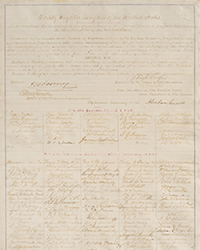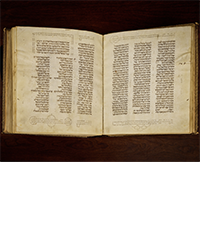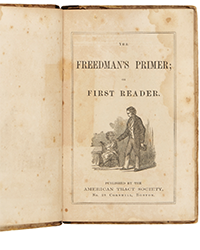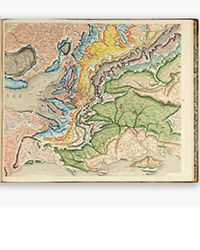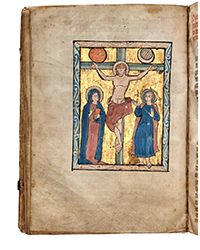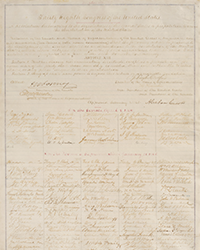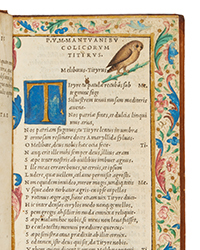Zephyr Used & Rare Books is back with a new selection of uncommon material, mostly ephemeral, but also some books you don't run across every day, if ever. Advertising and promotional materials are high on the list of items presented. Their selections are always fascinating and some will bring back personal memories. This group is titled Winter Selections – Catalogue March, 2025. Here are some examples of the types of material you will find.
Bears rarely live more than 25 years, but this one will be 77 this year. We begin with two posters from the Department of Agriculture, Forest Service, published in 1948. One is from the “birth” year of Smokey Bear. Smokey may think it's time for him to rest, but sadly, his job is not yet done. We still need his sage advice that highlights this poster, Remember – Only you can Prevent Forest Fires! Smokey has done his part but you have not. “Smokey Says – Crush It, Break It, Drown It, Use It.” Accompanying pictures explain what those words mean. The other poster borrows its heading from Pearl Buck's novel, except it adds a bit of punctuation, the Good Earth? It explains, “Forest Fires destroy lives – homes – wild life – timber – crops. Help Prevent Disaster.” Item 57. Priced at $450.
If you are looking for an excuse to drink booze, you should try Lawrence, Ostrom & Company's Famous 'Belle of Bourbon' For Medicinal and Family Use. Unlike other alcoholic drinks that might be death to you, this one “is death to malaria, chills and fever, typhoid fever, indigestion, dyspepsia, surgical fevers, blood-poisoning, consumption, sleeplessness or insomnia, and dissimulation of food.” It even comes with a doctor's recommendation and you can tell from his name he is an honest one – J. P. Barnum. Actually, Dr. Barnum, who is also an “analytical chemist,” only attests that it contains no fusel oil (which might affect its flavor) but not that it cures any of those illnesses. He does say, “I cheerfully recommend the same for family and medicinal purposes,” without specifying what those purposes are. Perhaps he had too much bourbon when he wrote that. The price was $1.25 per bottle. This broadside was issued in the May 14, 1888, issue of the Oregonian newspaper. Item 73. $150.
The Associated Tile Manufacturers say Make YOURS the Popular Market. This 1918 pamphlet was directed to “progressive butchers.” Regressive butchers wouldn't have cared, but up-to-date ones were concerned with the cleanliness of their meat and fish markets. That's understandable, because no one wants to buy meat from a dirty store. As they graphically explain, “The butcher cannot handle his goods without splattering some greasy or bloody fragments of meat and bone over the floor and portions of the walls of his shop, and no practical way to avoid this could be devised.” Fortunately, there is a way to minimize the impact of this – tile. Tile floors and walls can easily and quickly be wiped clean. This is because tiles are not porous, so they won't absorb the offending impurities that “will soon decay and smell.” They close the sale by explaining, “Tile will be the greatest help to your making your market a money-maker. Tile will advertise your shop. Tile will attract people to your market. Tile will increase your trade. Tile will help you overcome competition. Tile will bring you to the front.” Is there anything tile can't do? Item 14. $225.
In the old days, people didn't have access to everything they want via the internet. It was a challenge to find things easily available today, like pornography. What was out there was primitive. But, where there's a will there's a way. Someone unknown was able to publish these 16 volumes of erotic fiction in the 1930s and 1940s. Perhaps they made the Depression and wartime a little brighter. Among the titles of these literary gems are In the Back of a Cadillac, Dreams of a Virgin, She Wears No Bloomers, The Love Life of Christine, No Use for Rubbers, Experience in a Bathhouse, Sex and Sadness, Wet Dreams, It's Delightful, Blondes and Redheads, Sexology, Amorous Secretary, etc. Item 45. $650.
Some people may think the Tesla was the first electric car, but electric vehicles were quite popular back at the turn of the last century. They vied with steam cars for the most sales, with gasoline engine cars a distant third. However, by the early 1920s, the first two had virtually disappeared. Electric vehicles were slower, and didn't go all that far on a charge. Meanwhile, oil discoveries made gasoline relatively cheap. With the advent of the Good Roads movement, people were able to travel long distances, and the need to travel greater distances without having to refuel became paramount. But, in 1900, electric vehicles were still approaching their peak. Here is one. Item 24 is a showroom catalogue for the Columbia Automobiles Company. For example, the Mark III Columbia Phaeton could go 30 miles on a charge with a standard battery (someone has crossed this out and written in 120, perhaps because they had a better-than standard battery). It reached speeds up to 12 miles per hour, had 32 inch diameter front and 36 inch back wooden wheels, and could carry two passengers and an attendant. As the norm at that time, it looks like a horse-drawn buggy, but unseen in the back is the electric engine and battery. They was also big on making delivery wagons. Columbia was in business from 1899-1910, when it was taken over the by the United States Motor Company, better known for making the Maxwell (remember Jack Benny?). Maxwell later became Chrysler, so Columbia's descendants still survive. Item 24 $550.
Nash is another defunct brand. Founded in 1917, it made cars under that name until 1957, though in 1954, it merged with the similarly distressed Hudson to become American Motors. The Nash nameplate disappeared after 1957 though their Rambler model lasted for several more decades. This dealers' brochure comes from the American Motors era, 1956, Nash's next-to-last year. By this time they had finally come up with some exciting cars but it was too late. They did not have the size to compete with the Big Three in the larger car market. The brochure announces Nash Presents for 1956 The World's Finest Travel Cars. They featured “Flashing New 220 H.P. Jetfire V-8 Performance...New Speedline Styling...and New Bonus Features that Double Your Motoring Pleasure.” It wasn't enough. A fad of the 1950s was two-tone colors. Everyone offered them on their cars, but the idea faded away as cars became more bland. But, it has lately started to make a comeback. However, the Nashes in this brochure feature an even shorter lived fad that never had the success of two-toning. It is three-toned cars. These cars are really quite spectacular to see, but evidently it was too much for most consumers as three-toning lasted only from 1955-1958. Item 29. $100.
Zephyr Used & Rare Books may be reached at 360-695-7767 or zephyrbook@gmail.com.


